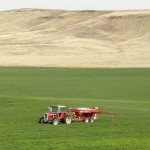
Jay P. Clark
Jay P. Clark has headed up operations at Clark’s Crystal Springs Ranch in Idaho for nearly five years, providing hunting opportunities and harvesting crops on the land. In addition to corn, oats, and hay, Jay P. Clark will soon be planting camelina, a flowering plant that is currently being used in the development of alternative fuel sources. The fast-growing plant is ideal for replacing expensive oil in powering jets. Recently, Jay P. Clark spoke with Interviewing Experts about this exciting new source of alternative fuel.
Interviewing Experts: Thank you for speaking with us today, Mr. Clark. Could you first explain how this plant is harvested for use in fuel?
Jay P. Clark: Sure. Camelina contains small seeds that are heavy with omega oils. These oils can be extracted for use in food, with the cloudier, granier-looking oils from camelina being used for fuels.
Interviewing Experts: Are these fuels used to power cars we see on the road every day?
Jay P. Clark: Not yet. The biofuels from camelina oils are primarily being put to use in planes and jets at the current time.
Interviewing Experts: Is this oil being used in American jets and planes right now?
Jay P. Clark: This is something that is still in trial here in the States. The USDA only recently began issuing insurance to farmers interested in growing camelina crop.
Interviewing Experts: So then these camelina-growing operations aren’t only good for the environment…it sounds like they’re also good for the economy.
Jay P. Clark: I absolutely believe that! Jobs will be created out of all of this, not just for harvesting the crop, but also for extracting the oil and transporting it.
Interviewing Experts: Does camelina seed have other uses?
Jay P. Clark: Camelina seed makes great feed for livestock, which could lead to healthier livestock, providing an added benefit to the consumer food market.
Interviewing Experts: I’ve also heard the oil from camelina can be used in the place of vegetable oil.
Jay P. Clark: Yes. It cannot only be used as a vegetable oil substitute, but it can also be used in cosmetics.
Interviewing Experts: When will your ranch begin growing camelina?
Jay P. Clark: In the spring, Clark’s Crystal Springs Ranch plans to begin growing camelina for harvest.
Jay P. Clark’s Crystal Spring Ranch occupies thousands of acres of land in an area of Idaho close to Boise. He holds degrees in social sciences and natural sciences from Northwest Nazarene University.
Speak Your Mind